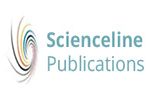(2021) Phenotypic Study on the Bacterial Isolates from Equine with Respiratory Disorders regarding Antimicrobial Drug Resistance. World's Veterinary Journal. pp. 98-109. ISSN 23224568 (ISSN)
|
Text
WVJ 11(1) 98-109, Mar 25, 2021.pdf - Published Version Download (1MB) |
Abstract
Upper respiratory tract infection and pneumonia in foals are primarily caused by a bacterial infection. Gram-negative bacteria are commonly found in neonatal pneumonia although gram-positive and mixed infections could be accompanied. The current study aimed to detect the different pathogens causing respiratory disorders in the equine, describe the antimicrobial resistance in these pathogens, and determine the types of antimicrobial isolates. A total of 203 different samples were collected from 42 horse foals, 5 adult horses, and 4 donkey foals from June 2019 to April 2020. All samples were subjected to bacteriology analysis and isolated bacteria were analyzed using susceptibility test for different antibacterial agents. The findings indicated that 38 (74.5%) animals were positive for the isolation of bacteria causing respiratory disorders. The most predominant isolates were Klebsiella pneumoniae subsp. Pneumoniae followed by Staphylococcus aureus, Streptococcus equi, Pseudomonas aeruginosa, Streptococcus zooepidemicus, Proteus mirabilis, Rhodococcus equi, Stenotrophomonas maltophilia, and Streptococcus mitis. Stenotrophomonas maltophilia is isolated from all organs, including the lungs. All K. pneumoniae isolates were sensitive to lomefloxacin, cefotaxime, meropenem, enrofloxacin, neomycin, and chloramphenicol. The Pseudomonas aerugenosa (P. aeruginosa) is sensitive to aztreonam and 20% of isolates sensitive to Piperacillin-tazobactam. All Proteus mirabilis were sensitive to ampicillin-sulbactam, piperacillin-tazobactam, and cefoperazone. Stenotrophomonas maltophilia was only sensitive to oxytetracycline and lomefloxacin. Staphylococcus aureus was susceptible to Piperacillin-tazobactam (50%), 25% to lomefloxacin; Streptococcus equi were sensitive to vancomycin 33.3% while 16.7% to erythromycin and doxycycline, Streptococcus zooepidemicus (100%) were sensitive to cefotaxime, meropenem, and doxycycline. All isolates of Enterococcus species were sensitive to penicillin, piperacillin-tazobactam, and lomefloxacin. Moreover, Rhodococcus equi (one isolate) was only sensitive to clarithromycin. The antimicrobial susceptibility test illustrated the presence of multidrug-resistant and pan-drug resistant isolates which proved the indiscriminate and extensive use of antibiotics. In conclusion, resistance monitoring data and risk assessment identified several direct and/or indirect predisposing factors to be potentially associated with MDR development in the equine health sector of Egypt. The predisposing factors may be attributed to insufficient veterinary healthcare, monitoring, and regulatory services, in addition to the intervention of animal health service providers, and/ or farmers’ lack of knowledge about drugs. The misuse and overuse of antibiotics have led to the evolution of antibiotic-resistant bacteria in equine in Egypt.
| Item Type: | Article |
|---|---|
| Keywords: | Antimicrobial agents, Klebsiella pneumoniae, Streptococcus zooepidemicus. |
| Subjects: | Q Science > Q Science (General) S Agriculture > SF Animal culture |
| Divisions: | World's Veterinary Journal (WVJ) |
| Page Range: | pp. 98-109 |
| Journal or Publication Title: | World's Veterinary Journal |
| Journal Index: | Scopus |
| Volume: | 11 |
| Number: | 1 |
| Publisher: | Scienceline Publication, Ltd |
| Identification Number: | https://doi.org/10.54203/scil.2021.wvj14 |
| ISSN: | 23224568 (ISSN) |
| Depositing User: | Dr. Alireza Sadeghi |
| URI: | http://eprints.science-line.com/id/eprint/488 |
Actions (login required)
 |
View Item |

